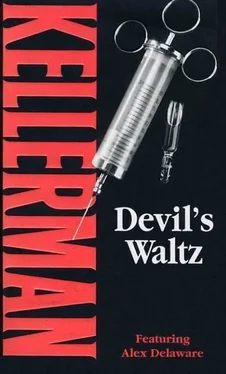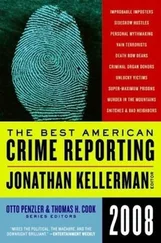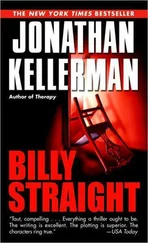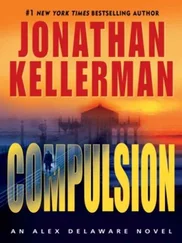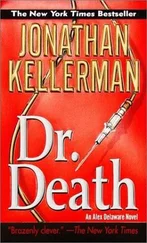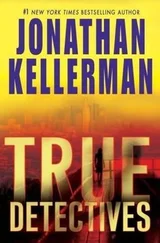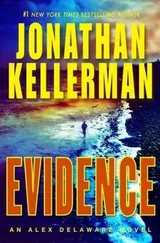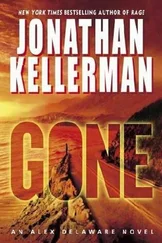Click. Female voice: “Economics.”
“Professor Zimberg, please.”
“Hold, please.”
Click. Another female voice: “Professor Zimberg’s office.”
“Professor Zimberg, please.”
“I’m afraid he’s out of town, sir.”
I threw out a guess: “Is he over in Washington?”
“Um... Who is this, please?”
“Professor Schweitzer, an old colleague. Is Wal — Professor Zimberg at the convention?”
“What convention is that, sir?”
“National Association of Biostatisticians — over at the Capital Hilton? I heard he was going to present some new data on non-parametrics. The study the Ferris Dixon Institute’s funding.”
“I’m — The professor should be calling in soon, sir. Why don’t you give me your number and I’ll have him get back to you.”
“Appreciate the offer,” I said, “but I’m about to hop on a plane myself. That’s why I didn’t make the convention. Did the professor write up an abstract on his paper before he left? Something I could read when I get back?”
“You’d have to talk to the professor about that.”
“When do you expect him back?”
“Actually,” she said, “the professor’s on sabbatical.”
“No kidding? I didn’t hear that... Well, he’s due, isn’t he? Where’s he off to?”
“Various places, Professor...”
“Schweitzer.”
“Various places, Professor Schweitzer. However, as I said, he does call in frequently. Why don’t you give me your number and I’ll have him get back to you.”
Repeating, almost word for word, what she’d just said a minute ago.
Word for word what another friendly female voice had said, five minutes ago, speaking from the hallowed offices of the Ferris Dixon Institute for Chemical Research.
To hell with Alexander Graham Bell.
I drove back to some hallowed halls I could see and touch.
There was one parking meter free near the university administration building. I went to the registrar’s office and asked an Indian clerk in a peach-colored sari to look up Dawn Kent Herbert.
“Sorry, sir, we don’t give out personal information.”
I flashed my clinical faculty card from the med school across town. “I don’t want anything personal — just need to know in which department she’s enrolled. It has to do with a job. Verification of education.”
The clerk read the card, had me repeat Herbert’s name, and walked away.
A moment later she returned. “I show her as a graduate student in the School of Public Health, sir. But her enrollment’s been terminated.”
I knew Public Health was in the Health Sciences building, but I’d never actually been there. Shoving more money in the meter, I headed toward south campus, passing the Psych building, where I’d learned to train rats and listen with the third ear, crossing the Science quad, and entering the Center at the west end, near the Dental School.
The long hall that led to Public Health was a quick jog from the library, where I’d just studied Ashmore’s academic history. Walls on both sides were lined with group photos of every class the medical school had graduated. Brand-new doctors looking like kids. The white-coats milling in the halls seemed just as young. By the time I reached the School of Public Health, the corridor had quieted. A woman was leaving the main office. I caught the door for her and stepped in.
Another counter, another clerk working in cramped space. This one was very young, black, with straightened hennaed hair and a smile that seemed real. She wore a fuzzy lime-green sweater with a yellow-and-pink parrot embroidered on it. The bird was smiling too.
“I’m Dr. Delaware from Western Pediatric Hospital. One of your graduate students worked at our hospital and I’d like to know who her faculty adviser is.”
“Oh, sure. Her name, please.”
“Dawn Herbert.”
No reaction. “What department is she in?”
“Public Health.”
The smile broadened. “This is the School of Public Health, Doctor. We have several departments, each with its own faculty.” She lifted a brochure from a stack near my elbow, opened it and pointed to the table of contents.
DEPARTMENTS OF THE SCHOOL
BIOSTATISTICS
COMMUNITY HEALTH SCIENCES
ENVIRONMENTAL HEALTH SCIENCES
ENVIRONMENTAL SCIENCE AND ENGINEERING
EPIDEMIOLOGY
HEALTH SERVICES
Thinking of the kind of work Ashmore had done, I said, “Either Biostatistics or Epidemiology.”
She went to the files and pulled down a blue fabric loose-leaf folder. The spine was lettered BIOSTAT.
“Yes, here we go. She’s in the Ph.D. program in Biostat and her adviser’s Dr. Yanosh.”
“Where can I find Dr. Yanosh?”
“One floor down — office B-three-forty-five. Would you like me to call and see if she’s in?”
“Please.”
She picked up a phone and punched an extension. “Dr. Yanosh? Hi. Merilee here. There’s a doctor from some hospital wanting to talk to you about one of your students... Dawn Herbert... Oh... Sure.” Frowning. “What was your name again, sir?”
“Delaware. From Western Pediatric Medical Center.”
She repeated that into the receiver. “Yes, of course, Dr. Yanosh... Could I see some identification, please, Dr. Delaware?”
Out came the faculty card again.
“Yes, he does, Dr. Yanosh.” Spelling my name. “Okay, Doctor, I’ll tell him.”
Hanging up, she said, “She doesn’t have much time but she can see you right now.” Sounding angry.
As I opened the door, she said, “She was murdered ?”
“I’m afraid so.”
“That’s really ugly. ”
There was an elevator just past the office, next to a darkened lecture hall. I rode it down one flight. B-345 was a few doors to the left.
Closed and locked. A slide-in sign said ALICE JANOS, M.P.H., PH.D.
I knocked. Between the first and second raps a voice said, “One minute.”
Heel-clicks. The door opened. A woman in her fifties said, “Dr. Delaware.”
I held out my hand. She took it, gave an abrupt shake, and let go. She was short, plump, blond, bubble-coiffed, and expertly made up and wore a red-and-white dress that had been tailored for her. Red shoes, matching nails, gold jewelry. Her face was small and attractive in a chipmunkish way; when she was young she’d probably been the cutest girl in school.
“Come in, please.” European accent. The intellectual Gabor sister.
I stepped into the office. She left the door open and came in after me. The room was pin-neat, minimally furnished, scented with perfume, and hung with art posters in chromium frames. Miró and Albers and Stella and one that commemorated a Gwathmey-Siegel exhibit at the Boston Museum.
An open box of chocolate truffles sat on a round glass table. Next to it was a sprig of mint. On a stand perpendicular to the desk were a computer and a printer, each sheathed with a zippered cover. Atop the printer was a red leather designer purse. The desk was university-issue metal, prettified with a diagonally set lace coverlet, a floral-patterned Limoges blotter, and family photos. Big family. Albert Einstein look-alike husband and five good-looking, college-age kids.
She sat close to the chocolate and crossed her legs at the ankles. I faced her. Her calves were ballet-thick.
“You are a physician?”
“Psychologist.”
“And what connection do you have to Ms. Herben?”
“I’m consulting on a case at the hospital. Dawn obtained a medical chart belonging to the patient’s sibling and never returned it. I thought she might have left it here.”
Читать дальше
